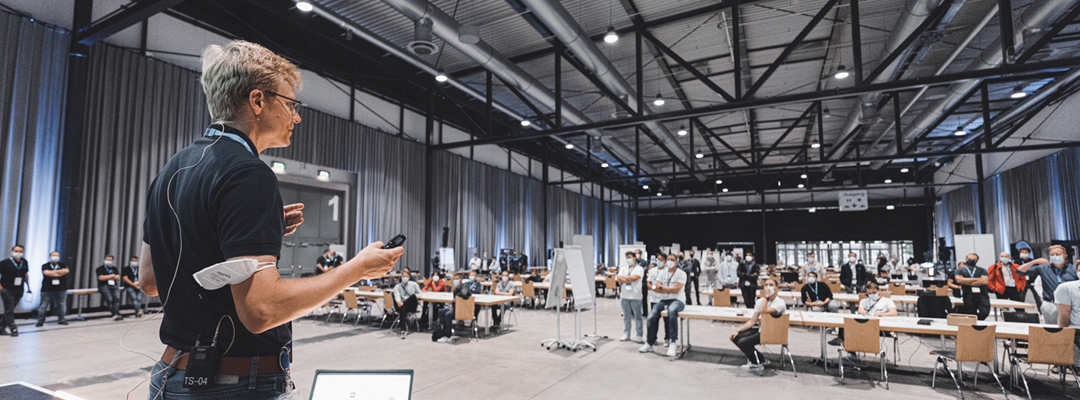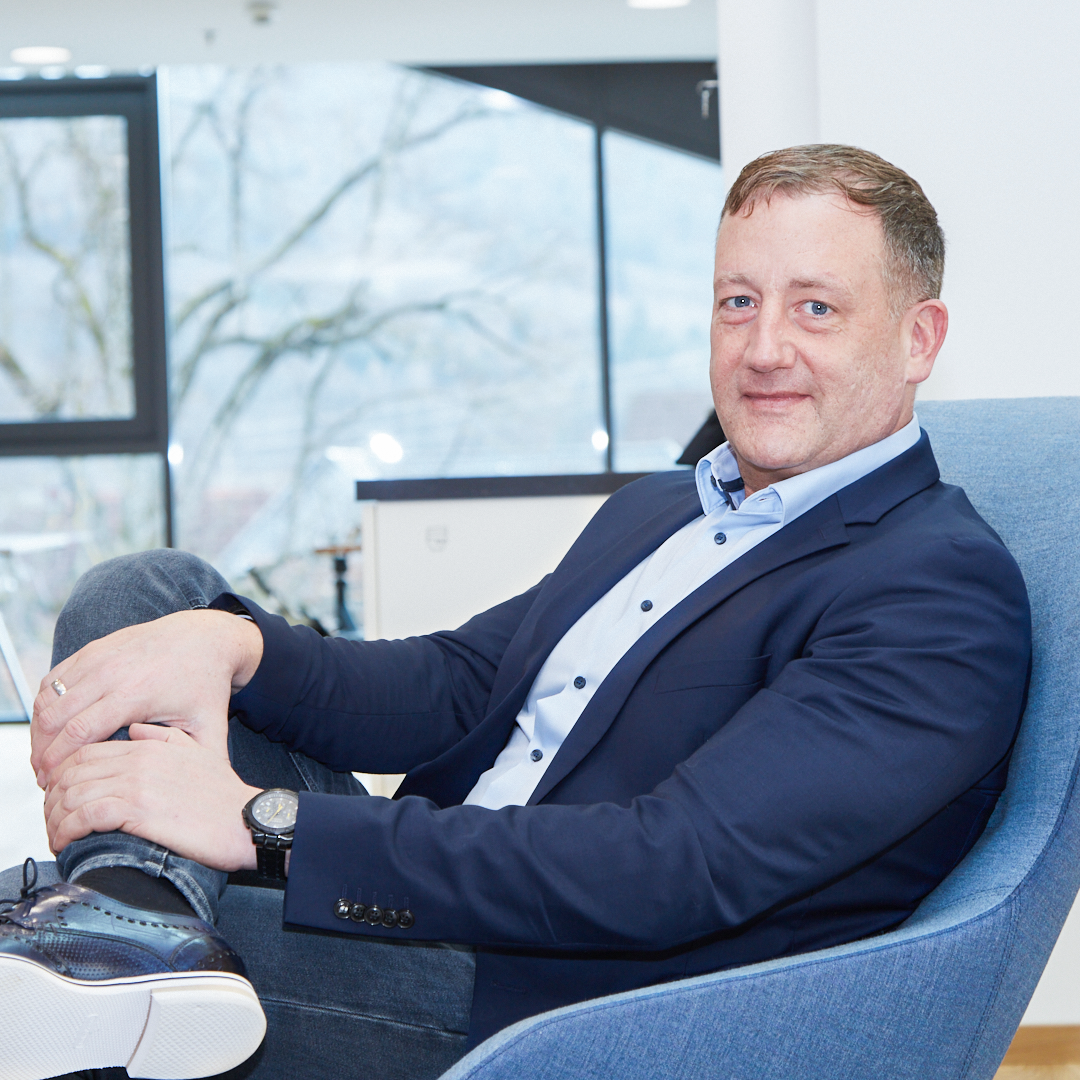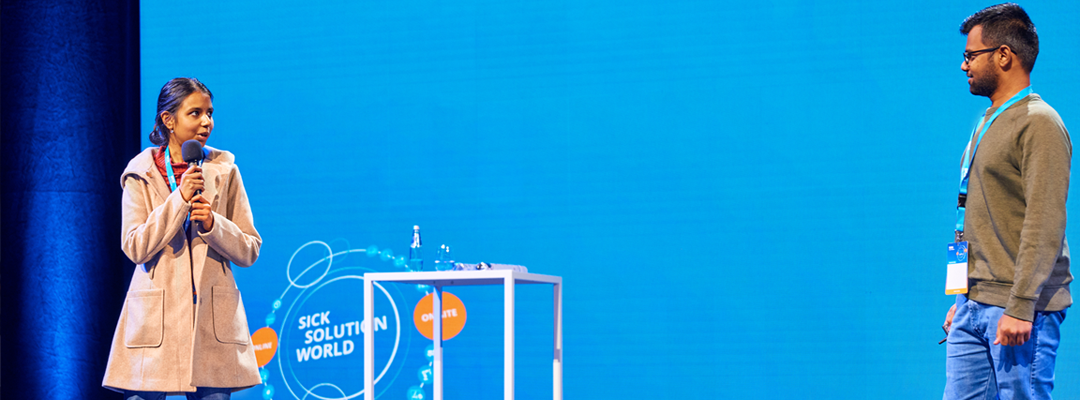
Magazine for the Annual Report
Hacking for the future; hacking for good!

SICK has been developing and encouraging innovative solutions for more than 75 years. Two things, above all, are required if the company is to continue to meet these aspirations: The systematic and sustainable support of disruptive ideas, as well as the courage to open up such innovation processes. The ideal prerequisites for this are created when tinkerers, inventors and digital natives put their heads together: At hackathons.
Employees from SICK have been attending hackathons for several years – as coaches, participants and organizers. “A small dream of mine came true when SICK organized its own hackathon for the first time last year,” explains Alexander Aberle, a Project Manager working on Industry 4.0. “I have attended a lot of these types of events in recent years and I have always been impressed by the very special energy found in the halls they took place in. So many individuals with the most varied of interests come together there and, while working together, their perspectives flow into a particular idea.”
Hackathons as a source of ideas
Providing a creative environment for tomorrow’s innovations was also the purpose of the hackathon that took place at the SICK Solution World event in October 2021. Under the motto ‘Hack the future of industrial automation’, 48 hours was given up to developing significant digital solutions that would make a lasting improvement to the industrial environment – hacking for good, so to speak.
Even in his day, Dr. Erwin Sick, innovator and pioneer, was already convinced that technical innovations should contribute towards sustainable treatment of the environment. “Technology for the benefit of humanity,” was his motto and, even after 75 years, there is nothing to add to this in terms of reasonableness. SICK is still guided by this concept of improving the world with innovative drive.

Hackathons bring this principle to life. They offer an ideal breeding ground for precisely such disruptive and sustainable innovations. Because this is where experienced companies meet young inventors, digital natives and exceptional up-and-coming talent. “It is this interplay of differing influences that holds enormous innovative potential,” says Alexander Aberle. “Real innovations are rarely created in silent rooms. On the contrary, they are the result of collective brainstorming, multi-perspectives, and swarm intelligence.”
This open approach to innovation also creates valuable partnerships that combine knowledge and resources beyond corporate boundaries. “At our hackathon, for example, we were supported by products and hack coaches from partner companies. Whether Microsoft, Amazon, Universal Robots, Bosch or Trumpf – they all invested together in tomorrow’s world of ideas. This is because nobody can master the challenges of the digital transformation single-handedly,” Alexander Aberle sums up.
Innovations and ideas that will endure
Sooner or later, however, every hackathon comes to an end. Work should be carried out on further implementation straightaway to ensure that good ideas do not fizzle out during their formative stages. “A hackathon is really just the start – an initialization of far more. So if a company wants to profit from the ideas it must encourage and develop them with all involved. This requires, above all, an appropriate culture of innovation.
This is the only way to create innovations and ultimately marketable business models,” concludes Alexander Aberle.
Hacking experiences: Many ideas and a lot of different results

Mouliha Sree Subbian Veluswaami and Sabari Kannan Muthalagu won first prize in the ‘Technology Excellence Award’ category at the SICK Solution World Hackathon in October 2021. At the time, they were both studying for Masters degrees in Embedded Systems Engineering at the University of Freiburg. When she finishes, Mouliha plans to make a career in Analog/Mixed CMOS circuit design, while Sabari wants to do a Doctorate in sensor development and then gain industrial experience as a hardware engineer in Germany. Team Work.Place.Cool.: Mouliha Sree Subbian Veluswaami and Sabari Kannan Muthalagu tells it like it was:
Why did you take part in SICK’s hackathon?
Participating in the hackathon gave us the fantastic opportunity to get to know several hack enablers from a variety of sectors, get into contact with them, and work together to find approaches for solving the most urgent industrial problems of our time. We were also interested in discussing things with other participants. It was exciting to see the innovative ideas that the others came up with, and how different they were – even when they used the same hardware.
Can you briefly describe your project? What exactly have you developed?
In our project, which we call ‘Work.Place.Cool’, we have developed a solution for the automated and individual adaptation of workplaces. The computer monitor at the workplace automatically adapts to the height of the employee, preventing poor posture. The background is that people spend most of their time at the workplace. But as a result they suffer from all sorts of spinal and musculoskeletal problems that have been shown to be caused by poor sitting and body posture. The main reasons for these problems include the rigid arrangement of the workplace – which may be suitable for one person (someone tall for example), but not for another (e.g. someone short).
And how can one implement this in technical terms?
First one must identify the individual workplace preferences of employees and convert them to a QR code. Then every person has their own QR code made up of individual furniture and machine settings. On entering the company, employees could then scan this code with a SICK camera, installed in the entrance area for example. The data in the QR code would then be sent from a computer to Amazon’s AWS cloud and received by a ctrlX core computer installed at the workplace. The height of the PC monitor would then be appropriately adjusted using a robot arm from Universal Robots. This means that a single workplace can easily be used by a variety of employees, but always individually adapted.
Was this your first hackathon? Did you like the event?
Yes, this was our first hackathon and we were delighted by it. The event was very well organized. And, above all, we got a lot of support from the hack enablers, who were very helpful during the brainstorming and prototype development phases.







